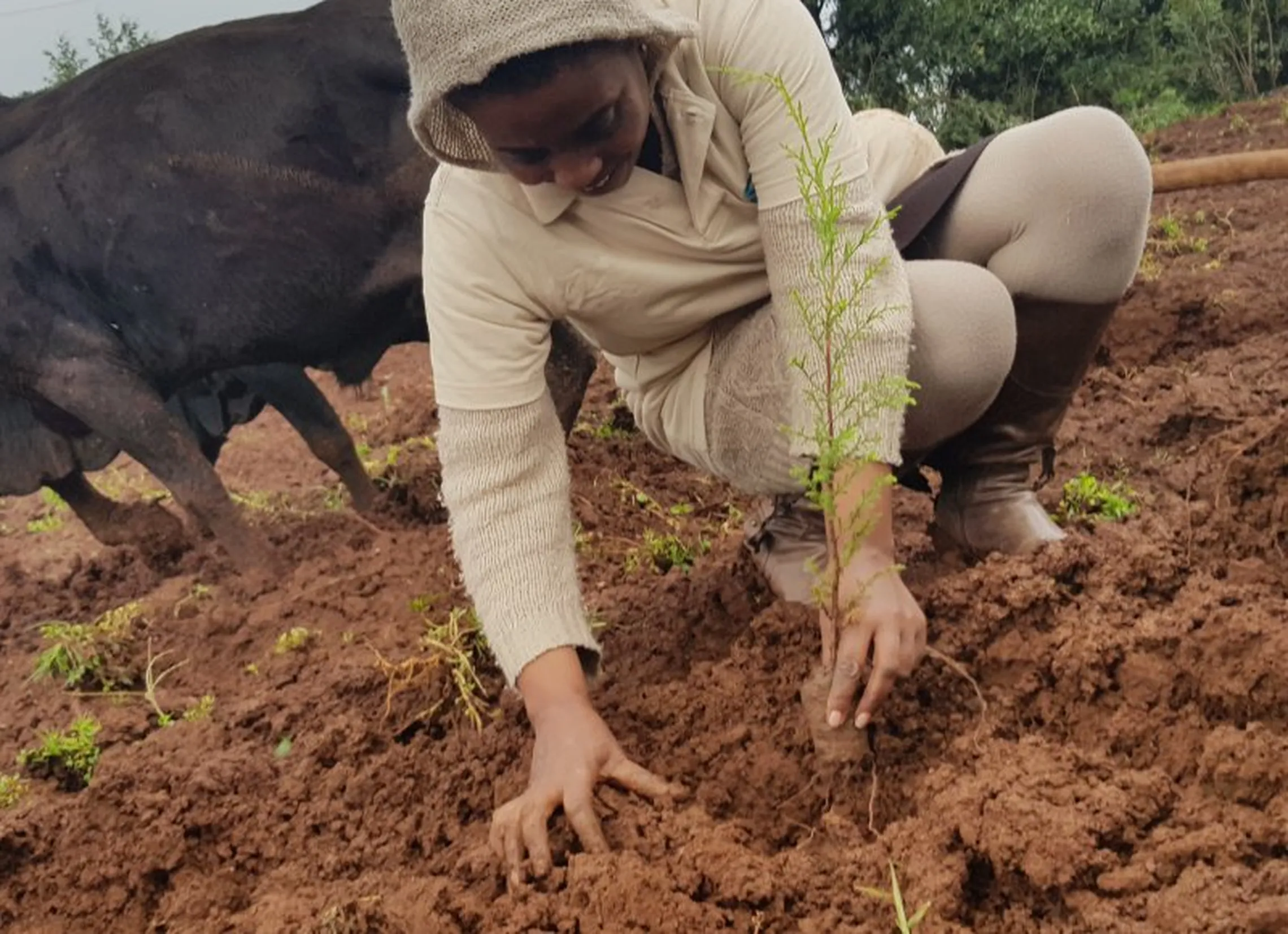SNV leaves a mark on the Green Legacy campaign

SNV staff in Ethiopia contributed to the Green Legacy campaign which was officially kicked off by Prime Minister Abiy Ahmed on 26 May 2019. The campaign is part of the country’s National Green Development Programme.
The Green Legacy initiative aims to plant four billion trees, of which 350 million were planted in a single day - 29 July 2019. Under this initiative, each Ethiopian anticipates to plant 40 trees until September. Since its official launching, Ethiopians, including the PM, have been involved in planting eco-friendly trees, mostly indigenous tree species, at various sites with the intention of restoring the trees that were deforested and used for energy and construction. Ethiopia generates most of its energy (90%) from forest-based sources.
SNV Ethiopia employees have planted more than 600 tree seedlings as a part of the national initiative. The seedlings were planted at Seblewongel Sadessa Botanical Garden, located 50 KM around Addis Ababa. The second round of planting will follow on 01 August 2019 with a goal to plant 250 seedling at a similar site.

Aster Girma planting a seedling
Data on the country’s forest cover reveals that despite the country's effort to plant trees on annual events, such as the Billion Tree Campaign from 2006 which combats environmental degradation, the forest cover has been reducing since the 1990’s. The current forest coverage of Ethiopia is between 15 to 20% and the Green Legacy will bring it up to 30%, covering only 2.3% of its area.
“We are committed to provide follow-up care and conserve the trees. The tress need care and follow up until their three years” said Yetnayet Girmaw, Agriculture Sector lead, SNV in Ethiopia.
On 29 July, Ethiopians have succeeded in planting more than 350 million tree seedlings in a single day. This has become a new world record surpassing India which have planted 66 million tree seedlings in one day.
The Steering Committee, led by the premier, announced before the Green Legacy campaign that it has nurtured 4.7 million seedlings and prepared 1.9 million hectares of land for the purpose.
Ethiopia launched a Climate-Resilient Green Economy (CRGE) strategy in 2011 to address both climate change adaptation and mitigation objectives. The document added, “Our country is well positioned and moving fast to contribute to developing a green global economy, the environmental legacy and commercial benefits of which will endure long into the future.”
One of the pillars to realise this objective as stated in the CRGE strategy is “Protecting and re-establishing forests for their economic and ecosystem services, including as carbon stocks”.